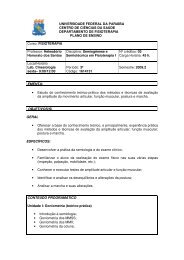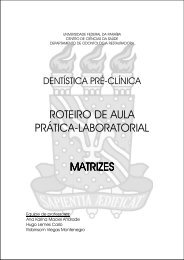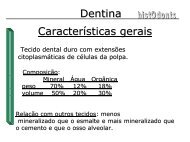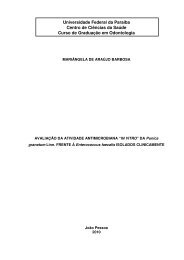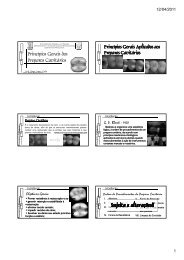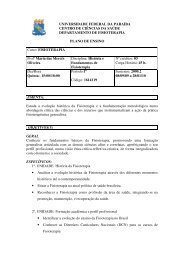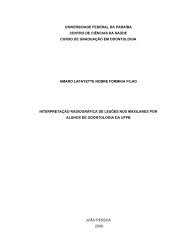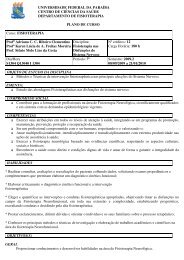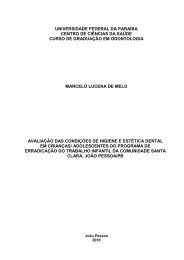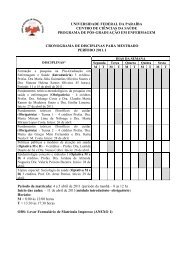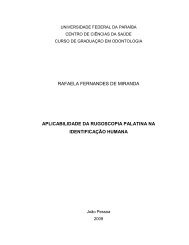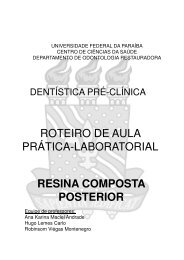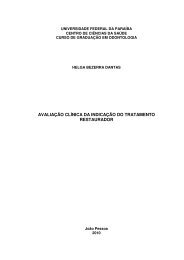An assessment of rubber dam usage amongst specialists in ... - CCS
An assessment of rubber dam usage amongst specialists in ... - CCS
An assessment of rubber dam usage amongst specialists in ... - CCS
Create successful ePaper yourself
Turn your PDF publications into a flip-book with our unique Google optimized e-Paper software.
Rubber <strong>dam</strong> <strong>usage</strong> <strong>amongst</strong> <strong>specialists</strong> 51<br />
Subjects and methods<br />
This was a prospective questionnaire-based<br />
study modelled on Dillman’s pr<strong>in</strong>ciples 12 . A pilot<br />
study was completed with subsequent m<strong>in</strong>or<br />
modifications to the questions. Number-coded,<br />
modified questionnaires were pr<strong>in</strong>ted on A3<br />
sheets, folded <strong>in</strong>to four-page, A4-sized booklets,<br />
copies <strong>of</strong> which are available from the authors<br />
on request. They were accompanied by a cover<strong>in</strong>g<br />
letter and a prepaid, self-addressed envelope,<br />
and were distributed <strong>in</strong> February 2005 to<br />
all 215 UK resident <strong>specialists</strong> registered on<br />
the 2004 General Dental Council’s specialist list<br />
<strong>in</strong> paediatric dentistry. Those unable to respond<br />
to the <strong>in</strong>itial questionnaire were followed up<br />
with a second mail-shot 6 weeks later. All<br />
responses were anonymous and confidential.<br />
The questions are summarized as follows:<br />
Box 2. Questionnaire sent to UK resident <strong>specialists</strong>.<br />
1 demographic characteristics, <strong>in</strong>clud<strong>in</strong>g qualifications, age and<br />
gender;<br />
2 use <strong>of</strong> RD for various restorative procedures, with a dist<strong>in</strong>ction<br />
between rout<strong>in</strong>e treatment and that carried out under <strong>in</strong>halation<br />
sedation (IHS) and dental general anaesthetic (DGA) (e.g. ‘How<br />
<strong>of</strong>ten do you use <strong>rubber</strong> <strong>dam</strong>, where possible, for the follow<strong>in</strong>g<br />
<strong>in</strong>dividual procedures?’); the possible responses were ‘always’,<br />
‘almost always’, ‘regularly’, ‘rarely’ and ‘never’;<br />
3 perceived benefits and barriers <strong>of</strong> RD use (e.g. ‘What do you<br />
feel are the ma<strong>in</strong> benefits <strong>of</strong> <strong>rubber</strong> <strong>dam</strong>?’/‘What do you feel are<br />
the ma<strong>in</strong> reasons that prevent you from us<strong>in</strong>g <strong>rubber</strong> <strong>dam</strong>?’);<br />
4 Differ<strong>in</strong>g methods <strong>of</strong> RD placement for anterior and posterior<br />
teeth (e.g. ‘If you do use <strong>rubber</strong> <strong>dam</strong> <strong>in</strong> your cl<strong>in</strong>ical practice for<br />
anterior/posterior teeth, how do you use it?’); and<br />
5 Use <strong>of</strong> local anaesthetic if us<strong>in</strong>g RD clamps.<br />
The majority <strong>of</strong> respondents were females<br />
(n = 95, 64%), and almost half <strong>of</strong> respondents<br />
were aged between 41 and 50 years <strong>of</strong> age<br />
(n = 67, 45%). Most respondents worked with<strong>in</strong><br />
the National Health Service (NHS) (n = 126,<br />
85%), with the rema<strong>in</strong>der <strong>in</strong> private practice<br />
(4%) or mixed practice (9%).<br />
Operator factors related to the frequency <strong>of</strong><br />
reported RD <strong>usage</strong> would suggest the follow<strong>in</strong>g:<br />
it is most commonly used <strong>in</strong> the 31–40-yearold<br />
age group (31–40 years = 61%; 41–50<br />
years = 46%; 51–60 years = 34%; > 60 years<br />
= 52%); there is m<strong>in</strong>imal difference <strong>in</strong> RD<br />
<strong>usage</strong> between the sexes (overall <strong>rubber</strong> <strong>dam</strong><br />
<strong>usage</strong>: males = 44%, females = 48%); fixedterm<br />
tra<strong>in</strong><strong>in</strong>g agreement specialist registrars<br />
report the highest use <strong>of</strong> RD, with community<br />
dental <strong>of</strong>ficers report<strong>in</strong>g the lowest <strong>usage</strong><br />
(Fig. 1); and those based <strong>in</strong> private practice<br />
report RD use more than those with<strong>in</strong> the NHS<br />
or mixed practice (private practice = 68%;<br />
mixed practice = 55%; NHS = 45%).<br />
Composite was the most commonly reported<br />
restoration to be placed under RD, with fissure<br />
sealant the least likely; however, where <strong>rubber</strong><br />
<strong>dam</strong> was placed under general anaesthetic, its<br />
use for fissure sealants and glass ionomer<br />
restorations <strong>in</strong>creased (χ 2 = 49.93, P = 0.001<br />
d.f. = 2, and χ 2 = 11.69, P = 0.003, d.f. = 2, respectively)<br />
(Fig. 2). With regard to endodontic<br />
procedures, permanent tooth endodontics were<br />
more likely to be carried out under RD than<br />
primary tooth endodontics (χ 2 = 77.28, P = 0.001,<br />
Data analysis was completed via a cod<strong>in</strong>g system<br />
and the data entered twice <strong>in</strong>to the SPSS Data<br />
Entry© computer program (SPSS Inc., Chicago,<br />
IL, USA) to ensure accuracy prior to f<strong>in</strong>al analysis,<br />
which consisted <strong>of</strong> simple frequencies and<br />
cross-tabulation. Where appropriate, chi-square<br />
analysis was completed and P-values generated.<br />
Results<br />
In total, 162 questionnaires were returned, a<br />
response rate <strong>of</strong> 75%. Overall, 13 respondents<br />
(8%) were no longer <strong>in</strong>volved <strong>in</strong> cl<strong>in</strong>ical paediatric<br />
dentistry, and therefore, were not<br />
<strong>in</strong>cluded <strong>in</strong> the f<strong>in</strong>al data analysis.<br />
Fig. 1. Use <strong>of</strong> <strong>rubber</strong> <strong>dam</strong> <strong>in</strong> relation to position held.<br />
© 2006 The Authors<br />
Journal compilation © 2006 BSPD, IAPD and Blackwell Publish<strong>in</strong>g Ltd



